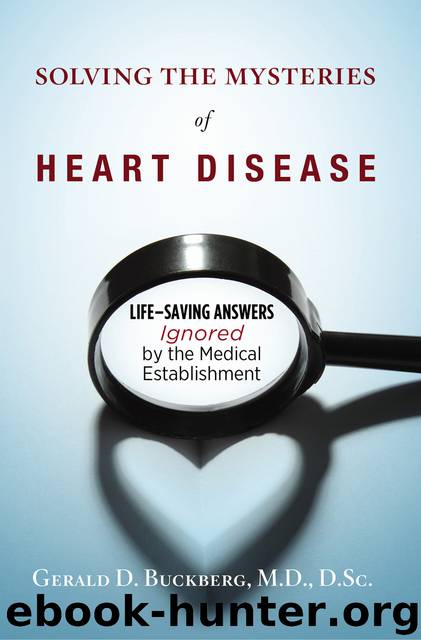Solving the Mysteries of Heart Disease by Gerald D Buckberg

Author:Gerald D Buckberg [Buckberg, Gerald D]
Language: eng
Format: epub
ISBN: 9780999847206
Publisher: Health House Press
Published: 0101-01-01T00:00:00+00:00
Figure 1: On left: cardiac shape when there is no blood reflow after a heart attack. Lighter gray is V-shape of normal heart, which becomes spherical (darker shading) after injured muscle thins and billows.
On right: cardiac shape after blood reflow showing extensive damage in darkened area of scar in inner shell and deeper muscle. The outer muscle shell is undamaged, but function does not recover, despite return of its shape toward normal.
As previously described in the chapter on heart attacks, the victim is rushed to the hospital, where a cardiologist performs an angioplasty to open the blockage in the artery (or uses drugs called thrombolytics that dissolve the clot). When the artery opens, symptoms rapidly improve: the chest pain lessens, and the blood pressure and the cardiac output come up, while the filling pressure in the lungs and the pulmonary artery pressure go down. The bulge disappears. The patient survives the heart attack and the angioplasty team takes pride in a job well done. The patient’s life has been saved by thwarting the immediate risk of dying from the heart attack.
But the picture is not as clear as had been hoped. The formerly bulging dead muscle within the heart attack region has now shrunk to a smaller, thickened… but still non-contracting region. (Figure 1, right image) Clues to a more gloomy future may already be forming — for even if only 20% of this injured muscle is without function, the scenario of progressive heart failure will begin to rear its ugly head.77
Remote Compensation
However, this grim future isn’t immediately evident. That’s because the body is truly remarkable. It strives to stay alive, and the way it does this after there’s a scar, is to have its remote muscle (the still-functioning muscle area away from the scarred tissue) compensate to keep the heart pumping.
Some of this was already known. In fact, cardiac surgeons can also become involved after an acute heart attack — to perform coronary artery bypass grafting to better restore blood flow to this remote muscle that is now so critical to the patient’s survival (and also may repair or replace a leaking mitral valve when needed).
Unfortunately, despite being able to surgically improve the remote muscle’s viability, surgeons are also helpless to stop adverse long-term outcomes — since congestive heart failure may develop, despite the presence of successful coronary artery bypass grafts. And the disease will finally prevail.
But why?
Not Making a Difference
This quandary deeply troubled me. I joined many other cardiac surgeon colleagues in realizing that many of our heart attack patients suffer a degradation of their health over time. This tragedy had played out in my own life, with my father’s experience. It pained me greatly to watch this robust man growing short of breath after only minor exertions. His walking became difficult, normal activities became impossible, and finally, he became incapacitated and was stuck in bed at home much of the time. He had to go to the emergency room every two weeks and no longer enjoyed living. It was terrible.
Download
This site does not store any files on its server. We only index and link to content provided by other sites. Please contact the content providers to delete copyright contents if any and email us, we'll remove relevant links or contents immediately.
Men In Love by Nancy Friday(5162)
Everything Happens for a Reason by Kate Bowler(4680)
The Immortal Life of Henrietta Lacks by Rebecca Skloot(4528)
Why We Sleep by Matthew Walker(4362)
The Sports Rules Book by Human Kinetics(4299)
Not a Diet Book by James Smith(3342)
The Emperor of All Maladies: A Biography of Cancer by Siddhartha Mukherjee(3070)
Sapiens and Homo Deus by Yuval Noah Harari(2988)
Day by Elie Wiesel(2721)
Angels in America by Tony Kushner(2596)
A Burst of Light by Audre Lorde(2548)
Endless Forms Most Beautiful by Sean B. Carroll(2431)
Hashimoto's Protocol by Izabella Wentz PharmD(2331)
Dirty Genes by Ben Lynch(2273)
Reservoir 13 by Jon McGregor(2242)
Wonder by R J Palacio(2143)
And the Band Played On by Randy Shilts(2132)
The Immune System Recovery Plan by Susan Blum(2030)
Stretching to Stay Young by Jessica Matthews(2002)
